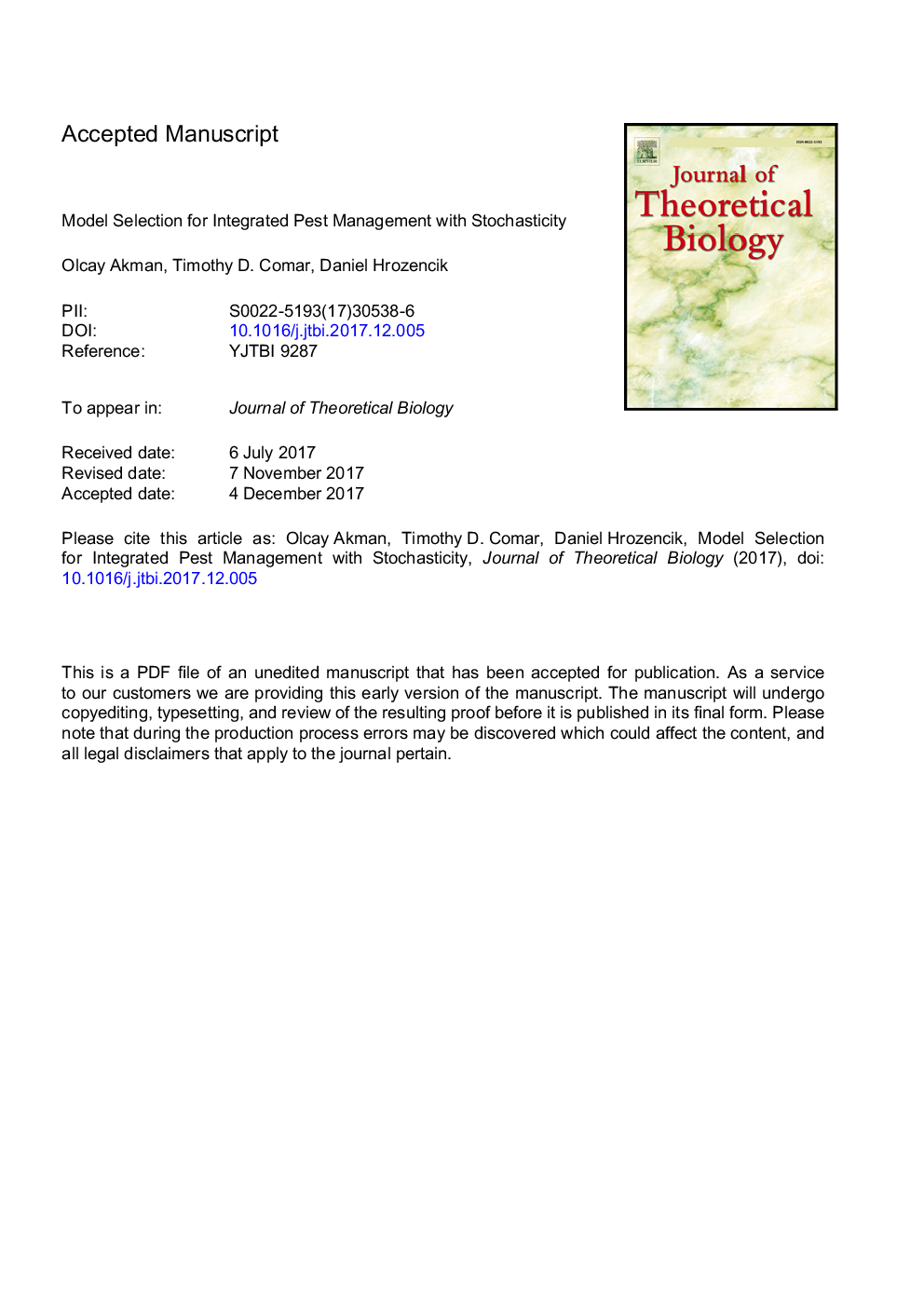| Article ID | Journal | Published Year | Pages | File Type |
|---|---|---|---|---|
| 8876821 | Journal of Theoretical Biology | 2018 | 24 Pages |
Abstract
In Song and Xiang (2006), an integrated pest management model with periodically varying climatic conditions was introduced. In order to address a wider range of environmental effects, the authors here have embarked upon a series of studies resulting in a more flexible modeling approach. In Akman et al. (2013), the impact of randomly changing environmental conditions is examined by incorporating stochasticity into the birth pulse of the prey species. In Akman et al. (2014), the authors introduce a class of models via a mixture of two birth-pulse terms and determined conditions for the global and local asymptotic stability of the pest eradication solution. With this work, the authors unify the stochastic and mixture model components to create further flexibility in modeling the impacts of random environmental changes on an integrated pest management system. In particular, we first determine the conditions under which solutions of our deterministic mixture model are permanent. We then analyze the stochastic model to find the optimal value of the mixing parameter that minimizes the variance in the efficacy of the pesticide. Additionally, we perform a sensitivity analysis to show that the corresponding pesticide efficacy determined by this optimization technique is indeed robust. Through numerical simulations we show that permanence can be preserved in our stochastic model. Our study of the stochastic version of the model indicates that our results on the deterministic model provide informative conclusions about the behavior of the stochastic model.
Keywords
Related Topics
Life Sciences
Agricultural and Biological Sciences
Agricultural and Biological Sciences (General)
Authors
Olcay Akman, Timothy D. Comar, Daniel Hrozencik,
